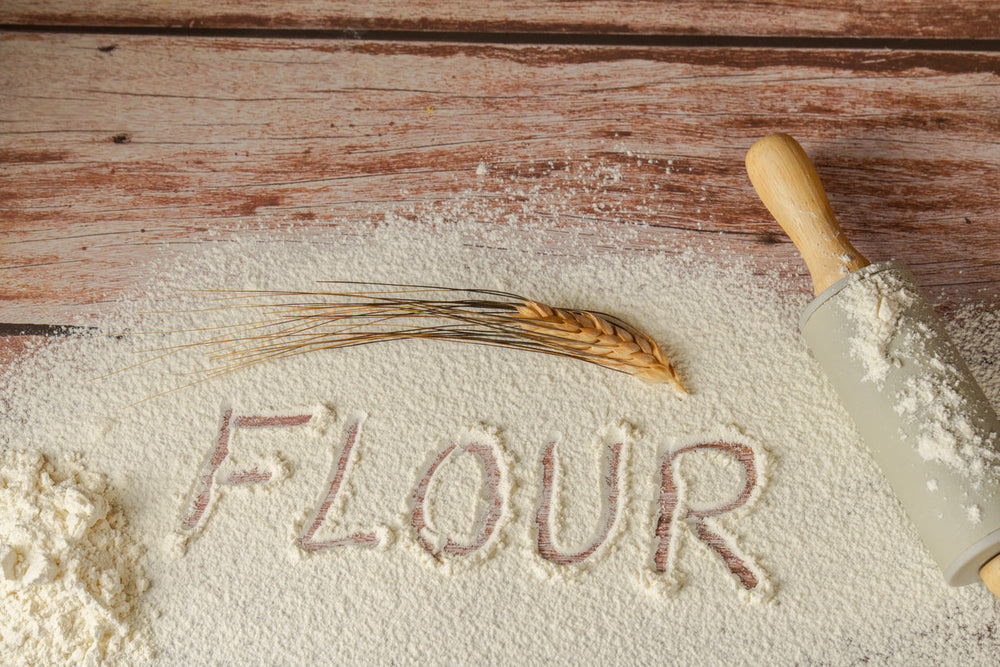Baking relies heavily on flour, but not all flours are made equal. Beyond branding, British and American flour varies in how they behave in baking due to variances in wheat types, protein content, milling methods, and legal requirements. This article examines the main differences between American and British flour. Let's get started.
Wheat Varieties
One of the biggest differences between British and American flour is the type of wheat used.
British Flour
The majority of flour produced in the UK is manufactured from soft wheat, which contains less protein. A finer texture is produced, making it perfect for delicate cakes, biscuits, and pastries. Soft wheat is utilised to produce light and airy bakes, as demonstrated by self-raising flour, a mainstay of British baking.
American Flour
American flour is typically made from hard wheat, which contains more protein and gluten. This gives baked goods a chewier texture, ideal for bread and dense cakes. Even all-purpose flour in the US tends to have a higher protein content than its UK counterpart, making it more suitable for robust bakes.
Protein Content and Gluten Formation
British Flour
protein content in British flour varies depending on the type:
Self-raising flour: 8-9% protein
Plain flour (equivalent to American all-purpose flour): 9-10% protein
Strong bread flour: 12-14% protein
For example, Homepride Self-Raising Pre-Sieved Flour is formulated to provide consistent, lump-free baking results with just the right amount of gluten for light textures.
American Flour:
All-purpose flour: 10-12% protein
Bread flour: 13-16% protein
Cake flour: 7-9% protein
Since American flour is generally higher in protein, it requires more liquid to achieve the same consistency as British flour. This can cause problems when following British recipes in the US and vice versa.
Milling Processes and Additives

British Flour
Flour in the UK is often less processed than in the US. British mills typically leave the flour unbleached, allowing it to retain its natural colour and nutrients. Additionally, UK law requires that white flour is fortified with certain nutrients, including calcium, iron, and vitamins B1 and B3.
Many British home bakers prefer options like Homepride Self-Raising Pre-Sieved Flour, which is finely milled and pre-sieved for convenience, ensuring a smooth, airy batter for cakes.
American Flour
In contrast, American flour is frequently bleached, a process that accelerates ageing and alters the protein structure. Bleached flour produces softer textures, which can be useful for cakes but is not common practice in the UK. Unbleached flour is available in the US, but many standard flours still undergo chemical treatments that change their composition.
Baking Adjustments
If you’re baking with British flour in the US or vice versa, consider these adjustments:
Moisture Levels: British flour absorbs less liquid than American flour, so reduce the liquid content slightly when using American flour in UK recipes.
Raising Agents: American self-rising flour contains salt, so adjust seasoning in British recipes to prevent overly salty bakes.
Protein Content: If a British recipe calls for plain flour but you’re using American all-purpose flour, the higher protein may make cakes denser. In this case, mix cake flour with all-purpose flour to get a closer texture.
Final Thoughts
Understanding the differences between British and American flour is key to achieving the best baking results. Whether you're making a delicate sponge cake or a rustic loaf, selecting the right flour ensures the perfect texture and structure. If you're looking for light, fluffy bakes, Co-op British Self-Raising White Flour is an excellent choice. For bread lovers, Co-op Strong White Bread Flour provides the strength needed for chewy, crusty loaves. By understanding flour types, protein levels, and processing methods, you can confidently bake your favourite recipes—no matter which side of the Atlantic you're on.


 Christmas 2025
Christmas 2025
 Frozen Food
Frozen Food
 Baking
Baking
 Beans, Peas, Soups & Tins
Beans, Peas, Soups & Tins
 Biscuits, Crackers & Cookies
Biscuits, Crackers & Cookies
 Candy / Sweets
Candy / Sweets
 Crisps & Snacks
Crisps & Snacks
 Chemist / Pharmacy
Chemist / Pharmacy
 Desserts
Desserts
 Gravy, Stock & Paste
Gravy, Stock & Paste
 Haggis
Haggis
 Indian Sauces, Paste and Pickle
Indian Sauces, Paste and Pickle
 Jams & Preserves
Jams & Preserves
 Poppy Appeal
Poppy Appeal
 Pot Noodles & Super Noodles
Pot Noodles & Super Noodles
 Scone Mix
Scone Mix
 Gluten-Free / Free From
Gluten-Free / Free From
 Tea Accessories
Tea Accessories
 Teapot & Tea sets
Teapot & Tea sets
 Tea For One
Tea For One
 Sugar & Creamer
Sugar & Creamer
 Tableware
Tableware
 Serveware
Serveware
 Plates & Trays
Plates & Trays
 Bowls
Bowls
 Cups & Saucers
Cups & Saucers
 Mugs
Mugs
 Silverware
Silverware
 Dinnerware - Accessories
Dinnerware - Accessories
 Dinnerware - For Pets
Dinnerware - For Pets
 Victoria Eggs - Hand-Drawn UK Homeware
Victoria Eggs - Hand-Drawn UK Homeware
 Jewelry & Accessories
Jewelry & Accessories
 Sale
Sale
 Christmas Gifts
Christmas Gifts

